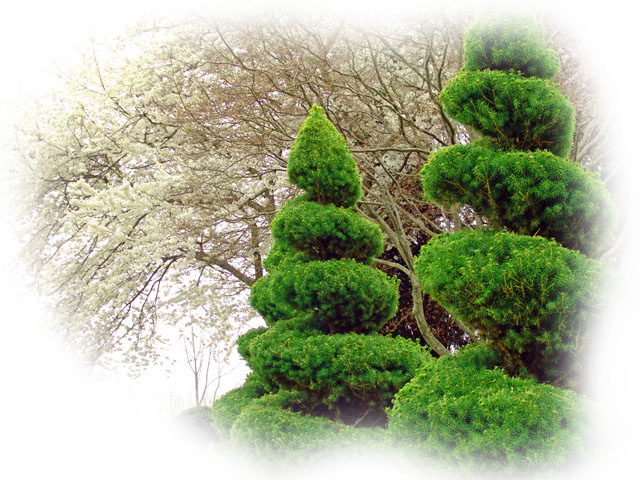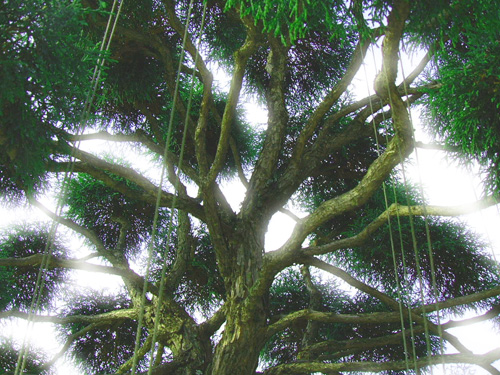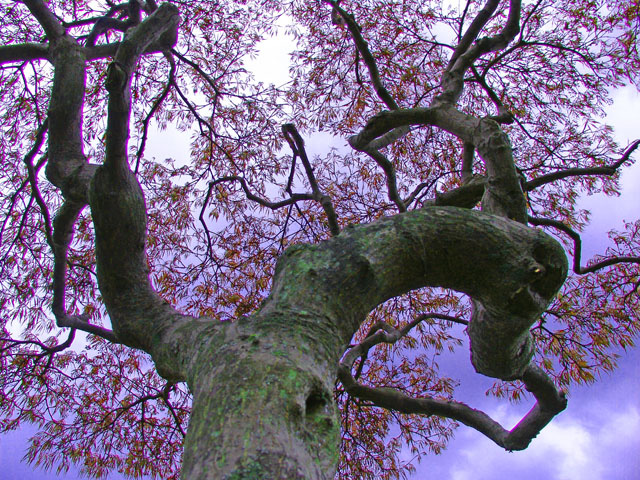
 |
 |
 |
 |
 |
 |
 |
" Instructions for your new garden"


Additional information will be added frequently, check back often...
You've transformed and created the garden of your dreams....Now what?
Think of your new garden as a new born child. It must be nurtured for it to grow and develop properly. Of course, each garden is different and requires slight varying requirements. But generally, the following instructions will provide a universal assistance in the proper care and maintenance of your new garden. You'll find that some instructions are common sense guidance but many fail to remember or neglect the immense significance of these simple requirements. Remember the key is consistency and attentiveness. Follow these simple instructions and you will enjoy your new garden for many years to come.
Watering
In order to establish a healthy new garden, watering is the single most important factor. It is the element that developments strong new root systems for your newly transplanted trees and shrubs. Depending upon your soil condition and other specification of you garden, your schedule may vary. The standard schedule is to water the smaller plants every other day and the larger specimen plants ONLY twice a week but thoroughly. Do not over water the larger plants by watering them too often. Additional day of watering will be required during summer.
The watering schedule MUST be followed for two month and longer during the summer. It's important that the schedule be followed continuously without intermission. Please have someone water the new garden if you're going to be away for a prolong duration of time. A good start will prevent headaches in the future.
Watering Do's and Do Not's
Do water with a soft shower head type sprayer
Do Not use a sprayer attachment used to wash your cars
Do remember to remove the hot water from the hose prior to watering
Do water back and forth and Do Not stay in one spot too long

General Care and Maintenance
Fertilizer Application
Fertilizer is needed for strong and vigorous growth. At the time of installation, all plants has been applied with a time released fertilizer. This initial application will last for six month. Thereafter, additional application is needed. As for the brand, there are many out on the market and we usually recommend you select a slow time released fertilizer with an equal amount of Nitrogen, Phosphorous, and Potassium. The three numbers represented on the bags reflects the amount (eg. 20-20-20). Apply fertilizer at the drip line of the plants and not too close to the base or the trunk of the trees (drip line is the farthest width of the plant). A good schedule to follow is once in the spring and again in the fall.
Pesticide Application
Pesticides should be applied as needed. Damages occur to trees and shrubs that are in poor health and/or under stress. Therefore, your first priority is to make sure the plants are properly watered and fertilized so that the plants can naturally resist these infestations. Check for plants with yellowing or dyeing leaves. Examine the under side of leaves and branches closely to identify the cause. If you cannot properly identify the damage, give us a call or take a sample to the local nursery for proper identification. These are just some of the most common common problems.
Insecticide application is needed for insect damage. Usually insects can be seen with the naked eye for easy identification. There are many types of insects that can damage the plants but a general insecticide spray can be utilized for the most common problems. If you're using a "contact" spray, be sure to spray the top and under side of the leaves thoroughly. A "systemic" type of spray is also available which allows the insecticide to be absorbed into the plants.
Mitacide application is needed for mite damage. Mites are harder to see and identify. Mite damages are identifiable by a yellowing and dull browning to a section of the plant and quickly spreading to other areas. You can take a white piece of paper and shake the damaged areas and small crawling black dots should be visible. Mites cannot be controlled with insecticide. You must use a mitacide for proper eradication. And also a second application is needed a week later to eliminate all the mites (the eggs of the mites cannot be exterminated so time is required for them to all hatch).
Fungicide application is needed for fungi disease damage. Most common fungi plant disease is "powdery mildew" and can be identified by a thin irregular patches of a grayish white powdery material.
Herbicide application is needed for weed control. There are two types of post-emergent herbicides ( after the weed are present). One which eliminates the upper vegetation only and second is one that eliminates both the upper vegetation and roots. The second herbicide is recommended and the most widely known of this herbicide is "Round Up". It's best to treat the weeds when they are young and just emerging. Be careful not to spray the plants and do not apply during windy days.
Another herbicide option is to apply a pre-emergent herbicide. This is applied to the soil before the weeds have a chance to emerge. There are both granular and liquid form of this application. Of course hand weeding is always an option without the use of chemicals.
In all pesticide applications please read the label carefully and follow the instructions. Wear proper clothing and protection at all times. It is recommended to have a separate sprayer containers for insecticide/fungicide and herbicide. Store and dispose pesticide containers appropriately.
There are many other forms of damages caused by deer, rodents, heat/cold, pets, and physical. You may contact our office if you cannot identify the cause of damage or contact your county extension office for additional information.
Pruning
There are many aspects of pruning depending upon many factors/varieties to cover all in depth. Here are some general rule of thumb to follow when pruning and shaping the ornamental plants.
In the "pom" and "spiral" varieties of specimen plants, prune often and not wait and prune all at once. Regularly pruning will not only retain the shape but also promote more lateral shoots. This will allow the plants to fill in the open void spaces for a fuller look. Shaking and cutting out the interior dead growth is a good practice to encourage ventilation and discourage over crowding.
In the "weeping" varieties of specimen plants, prune to allow the trunk and some major branches to be exposed. This pruning process brings "character" to a weeping variety and eliminates the look of a "weeping shrub". Prune out all interior growth and allow only a thin outer layer of growth allowing the sun light to penetrate through.

In the "pine" varieties both "natural" and "table top" trained specimen plants, prune/pinch the back the "candles" (long the shoot that emerges in the spring) only leaving one third of the candle. This process will not allow the shoots to elongate and therefore retain the compact look with more lateral shoots.
As for the smaller shrubs, frequent pruning is recommend. Flowering shrubs should be pruned back after it has finished blooming for the season.
In all general pruning be sure to use a sharp scissor or pruner. Make all cuts clean and do not leave any stubs as this will promote faster healing time for the plants. Regular schedule pruning will improve the health, control growth, enhance flowering, and appearance.
We offer full maintenance service to our clients. A general maintenance service consists of pruning and shaping all plant materials, fertilizer application, checking for any insect/disease damages with treatment, and general cleaning. Contact our office to be placed on our yearly maintenance contract program.

©2009 Copyright Lee's Oriental Landscape Art